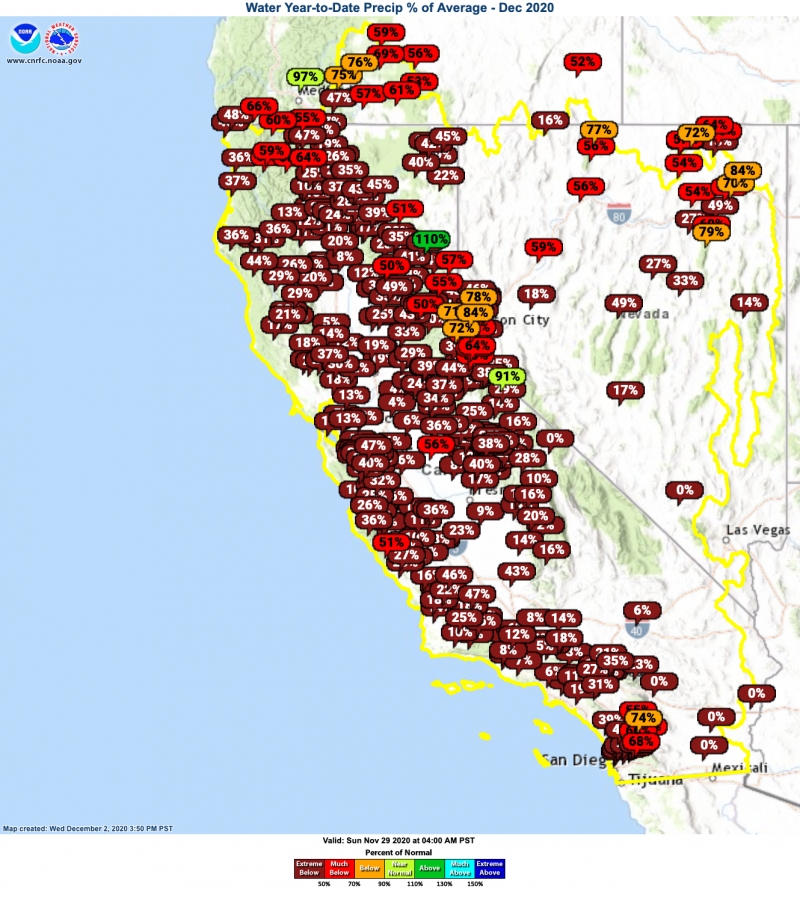Y
es, someone did say “drought.”
The current situation report from the U.S. Drought Monitor, for one. The service, which analyzes rainfall and other hydrologic data in its assessments, finds that 96.5% of California is experiencing some level of abnormal dryness. The monitor finds that about half the state is experiencing severe or extreme drought.
My Berkeley backyard rain gauge agrees, having recorded less than half an inch of rain since our water year began Oct. 1. Berkeley’s average rainfall for the period from Oct. 1 through Nov. 30 is about 4 inches.
Of course, that lack of rain stretches far beyond my little patch of dirt. Rainfall totals are far below 50% of normal for the vast majority of reporting stations tracked by the California Nevada River Forecast Center.

The outlook for at least the next couple of weeks is dry, dry and more dry.
